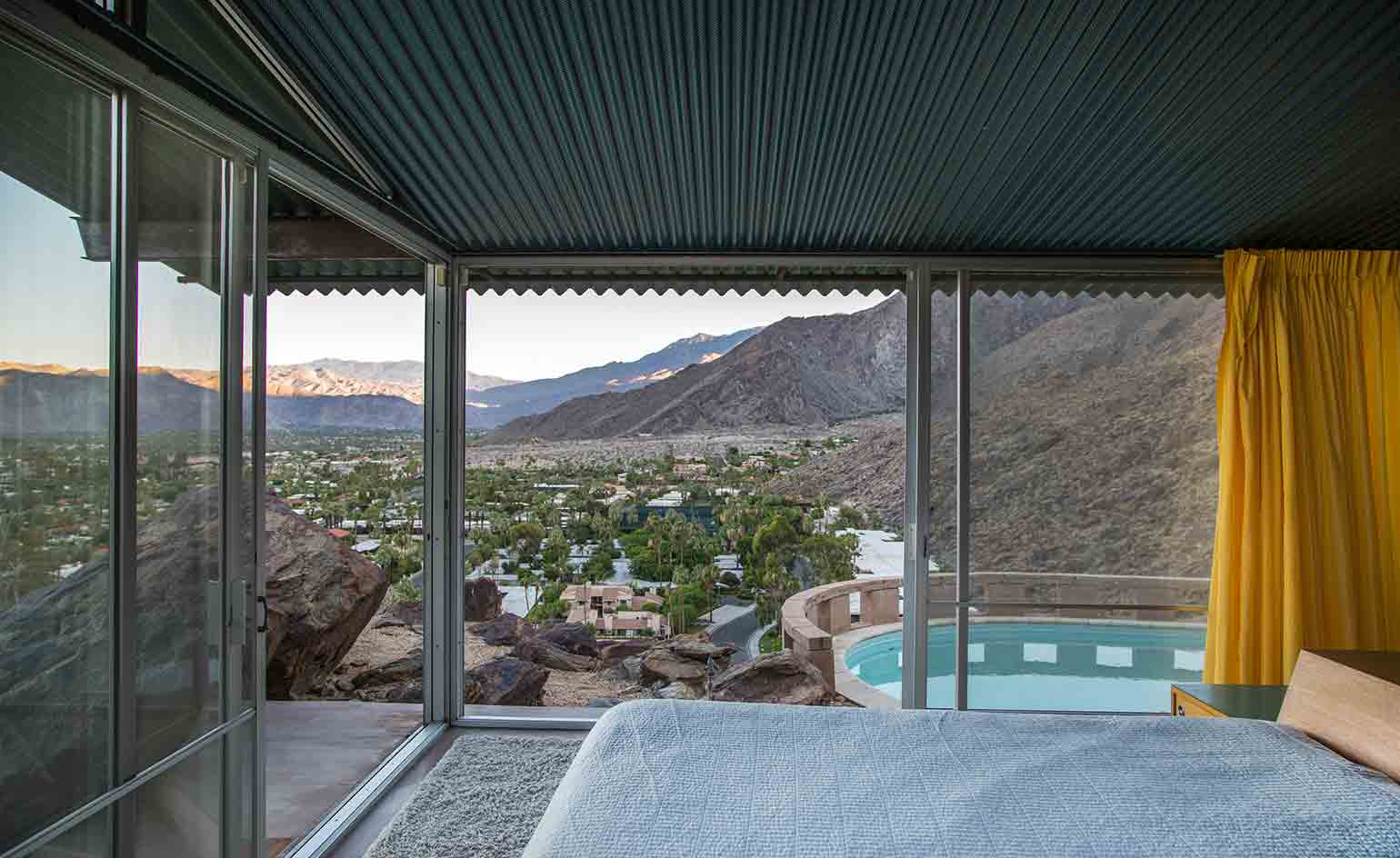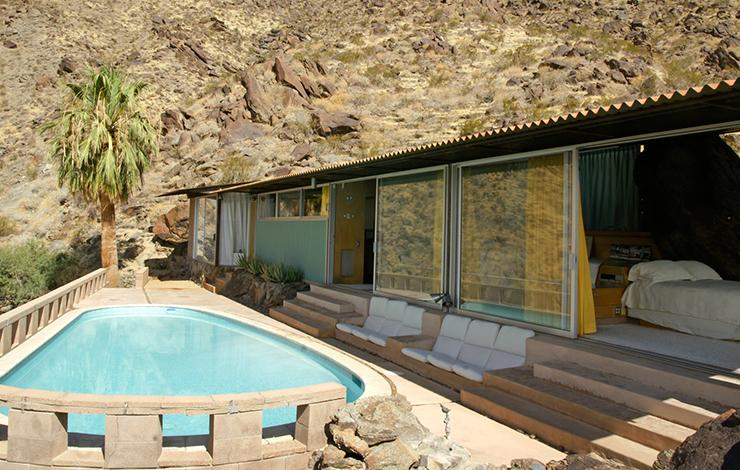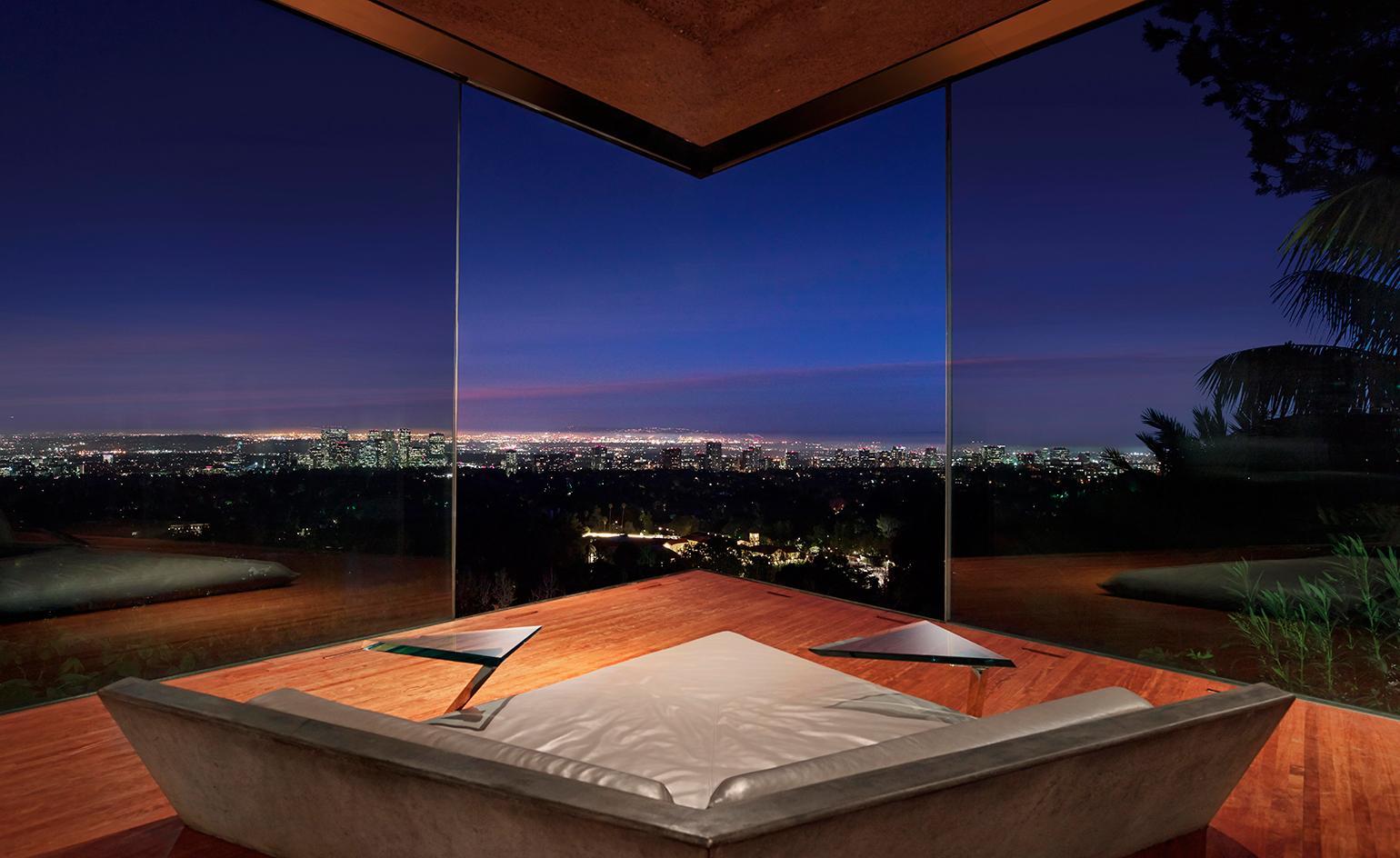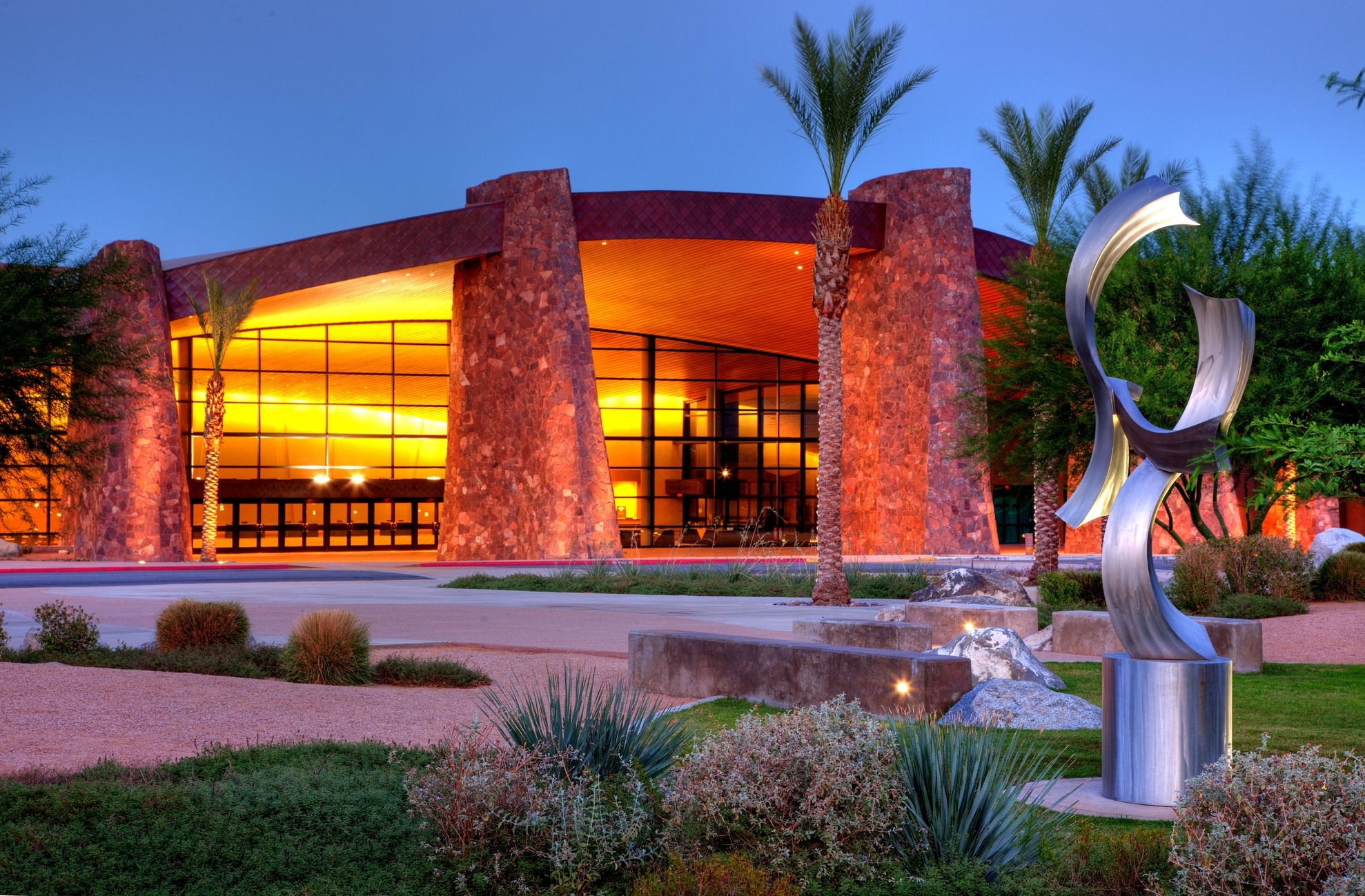
Who are the architects who built Palm Springs? Hailed as a place of modernist architecture pilgrimage for lovers of midcentury styles, this desert city has attracted some of the leading brains in modernism. Richard Neutra, Albert Frey, Hugh Kaptur, John Lautner, E Stewart Williams, William Cody, and William Pereira were all prolific here, and have been some of the key architects who made Palm Springs what it is today. With Palm Springs Modernism Week 2024 launching this week, we look back, zoom in, and celebrate their legacy.
The architects who built Palm Springs
Richard Neutra

Richard Neutra’s (1892–1970) architecture is eternally preserved at its peak midcentury moment in Julius Shulman’s photographs – filled with party-goers on warm all-year-long summer evenings. The slim-line, seemingly weightless structure of Neutra’s Kaufmann house in Palm Springs was the perfect setting for these scenes – where conversation flowed through the open plan entertaining spaces and across the elongated rectangle swimming pool.
Built in 1947, the Kaufmann house in Palm Springs is one of Neutra’s finest creations. So, how did this Vienna-born architect, who studied architecture under Adolf Loos and developed his career in Germany at the Berlin office of Erich Mendelsohn, end up reaching his architectural peak in California?
Albert Frey

When you look at the low, long and linear forms of Albert Frey's buildings, which appear modern, but also instantly at one with the arid landscape of the USA's Coachella Valley, it is hard to believe that this founding father of Desert Modernism in fact hails from the snowy mountains of Switzerland. Yet a look at Frey's illustrious career at the forefront of his profession, which led him from the heart of European modernism to working for Le Corbusier in Paris and designing buildings in New York, and it becomes clear that his worthy accolades are no accident.
Born in Zurich in 1903 and coming from a more traditional, building-orientated academic background – rather than being influenced by the more style led movements of his time, predominantly the Beaux-Arts – Frey worked in his home country and Belgium, before finding a position at Le Corbusier's Paris office. There, he worked on seminal projects with the great master, such as Villa Savoye, together with co-workers of the likes of Josep Lluís Sert and Charlotte Perriand.
Hugh Kaptur

Few of the creatives who came to define Palm Springs' particular brand of modernism actually came from the Coachella region. Hugh Kaptur, one of the Californian town’s most prolific architects, was no exception, hailing in fact from the cold expanses of Michigan and Detroit. Yet he lived and worked in Palm Springs most of his professional life, quickly becoming the true architectural embodiment of the Desert Modern spirit.
Born in 1931, Kaptur studied architectural engineering at the Lawrence Institute of Technology, before opting, in an almost spur-of-the-moment decision, to stay in Palm Springs for good, during a trip there in 1956. He quickly set up shop and began what would become an over 50-year-long career spanning many typologies from private and multi-family houses, to civic and commercial buildings.
John Lautner

Without the futuristic, concrete creations of celebrated American architect John Lautner (1911-1994), you wonder what Hollywood film directors would do for fictional lairs for the rich, powerful... and occasionally, evil. His gravity-defying residential projects have probably appeared in more movies than the work of any other architect; the outlandish cliff-side constructions often eclipsing the actors in their cinematic splendour. Not cosy perhaps, but often cosmic.
Lautner’s memorable screen stars include the Sheats-Goldstein residence, aka the pornographer’s pad in The Big Lebowski (now donated to LACMA), with its expansive, angled, coffered ceiling punctuated by 750 drinking-glass skylights; the UFO-like Malin House or ‘Chemosphere’, which appeared in Body Double; and the Elrod Residence, defined by a ‘sunburst’ concrete canopy that featured as the home of Willard Whyte in the Bond film Diamonds Are Forever.
E Stewart Williams

It’s hard to imagine snow in Palm Springs, but at the Aerial Tramway Mountain Station 2,600m above the town in the San Jacinto Mountains, it’s possible and fairly regular. A refuge for hikers and wildlife lovers, the station designed by architect E. Stewart Williams (1909-2005) is a modernist three-storey chalet with concrete wraparound viewing decks, complete with cosy cocktail lounge with fireplaces and sweeping curved glazed facades overlooking Palm Springs and the valley beyond.
Of all the architects who shaped Palm Springs, Williams was the one who shaped public life the most. His legacy can be seen all over town. He’s the architect behind the Palm Springs Art Museum (1976) and the Santa Fe Federal Savings & Loan building (1960), bought by the museum and reopened as the Palm Springs Art Museum Architecture and Design Center in 2014, after a renovation by LA-based practice Marmol Radziner.
William Cody

Palm Springs is one of the global epicentres of tasteful big ‘m’ modernism, a sprawling desert city where the dreams of architecture’s new generation came to glorious fruition, usually unrestricted by budgets and the tiresome burden of inclement weather. It was here in the desert that architects could explore the limits of glass and steel to their heart’s content; the resulting spindly paeans to open-plan living brought the arid desert landscape into the heart of the post-war house.
Palm Springs continues to bask in its modernist heritage, with an annual celebration of design, exhibitions and open houses and a strong ongoing tradition of innovation architecture. The pioneers who shaped the city included Albert Frey, Lloyd Wright and Richard Neutra, whose Kaufmann House continues to be the defining image of desert modernism. John Porter Clark, Donald Wexler and Richard Harrison and Palmer & Krisel were also prime movers, working hand in hand with property developers and hoteliers to transform Palm Springs into a destination for holidaymakers and weekenders, keen to escape the smog and stress of Los Angeles (the resort started life in the early 20th-century as a health retreat).
William Pereira

The architecture and career of American modernist William Pereira (1909-85) has been long celebrated and well documented. After founding William L Pereira & Associates in Los Angeles in 1958, Pereira went on to become widely recognised for a series of iconic buildings – with an impressive 400-or-so structures in total to his name. Examples include several university masterplans and buildings (including the distinctly brutalist Geisel library), multiple expansions to the Los Angeles International Airport, as well as its signature Googie-style Theme Building, the original three buildings of the Los Angeles County Museum of Art (LACMA), the Disneyland Hotel, and the Transamerica tower in San Francisco.
Almost inevitably – since Palm Springs became the nexus of aspirational celebrity life and modern architecture in the second half of the 20th century – Chicago-born Pereira was soon drawn to the Coachella Valley. And although he completed only a few seminal projects they came to define the small town’s rich architectural heritage. It was there that his style adapted and evolved, with landmark buildings drawing from the landscape and the spirit of desert modernism.







